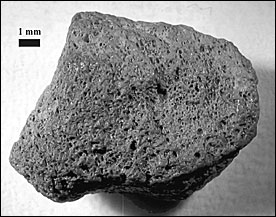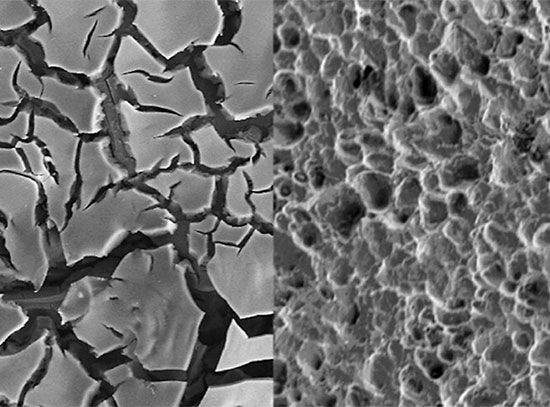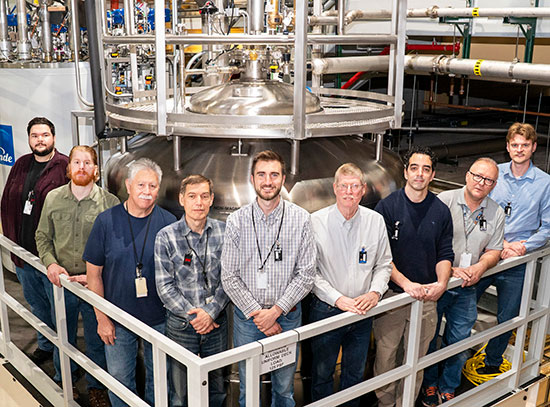Diamonds from Outer Space: Geologists Discover Origin of Earth's Mysterious Black Diamonds
January 10, 2007
The National Science Foundation has issued the following news release about the discovery of the origin of Earth's so-called black diamonds. This research was performed at the U.S. Department of Energy's Brookhaven National Laboratory at the National Synchrotron Light Source. At beamline U2B, which is operated by the Case Center for Synchrotron Biosciences, of Case Western Reserve University, scientists used infrared light to analyze the diamonds' elemental makeup. The researchers found a large amount of hydrogen, indicating that the diamonds originated in interstellar space, possibly raining down on Earth inside of meteorites billions of years ago. For more information about Brookhaven's role in this research, contact Karen McNulty Walsh at (631) 344-8350 or kmcnulty@bnl.gov.
If indeed "a diamond is forever," the most primitive origins of Earth's so-called black diamonds were in deep, universal time, geologists have discovered. Black diamonds came from none other than interstellar space.
 enlarge
enlarge
Black, or carbonado, diamonds, came from outer space, geologists have discovered. Credit: Steve Haggerty (Click image to download hi-res version.)
In a paper published online on December 20, 2006, in the journal Astrophysical Journal Letters, scientists Jozsef Garai and Stephen Haggerty of Florida International University, along with Case Western Reserve University researchers Sandeep Rekhi and Mark Chance, claim an extraterrestrial origin for the unique black diamonds, also called carbonado diamonds.
Infrared synchrotron radiation at Brookhaven National Laboratory was used to discover the diamonds' source.
"Trace elements critical to an 'ET' origin are nitrogen and hydrogen," said Haggerty. The presence of hydrogen in the carbonado diamonds indicates an origin in a hydrogen-rich interstellar space, he and colleagues believe.
The term carbonado was coined by the Portuguese in Brazil in the mid-18th century; it's derived from its visual similarity to porous charcoal. Black diamonds are found only in Brazil and the Central African Republic.
"Conventional diamonds are mined from explosive volcanic rocks [kimberlites] that transport them from depths in excess of 100 kilometers to the Earth's surface in a very short amount of time," said Sonia Esperanca, program director in the National Science Foundation's Division of Earth Sciences, which funded the research. "This process preserves the unique crystal structure that makes diamonds the hardest natural material known."
From Australia to Siberia, from China to India, the geological settings of conventional diamonds are virtually identical, said Haggerty. None of them are compatible with the formation of black diamonds.
Approximately 600 tons of conventional diamonds have been mined, traded, polished and adorned since 1900. "But not a single black/carbonado diamond has been discovered in the world's mining fields," Haggerty said.
The new data support earlier research by Haggerty showing that carbonado diamonds formed in stellar supernovae explosions. Black diamonds were once the size of asteroids, a kilometer or more in diameter when they first landed on Earth.
The National Science Foundation (NSF) is an independent federal agency that supports fundamental research and education across all fields of science and engineering, with an annual budget of $5.58 billion. NSF funds reach all 50 states through grants to nearly 1,700 universities and institutions. Each year, NSF receives about 40,000 competitive requests for funding, and makes nearly 10,000 new funding awards. The NSF also awards over $400 million in professional and service contracts yearly.
Useful NSF Web Sites
NSF Home Page: http://www.nsf.gov
NSF News: http://www.nsf.gov/news/
2007-10576 | INT/EXT | Newsroom









